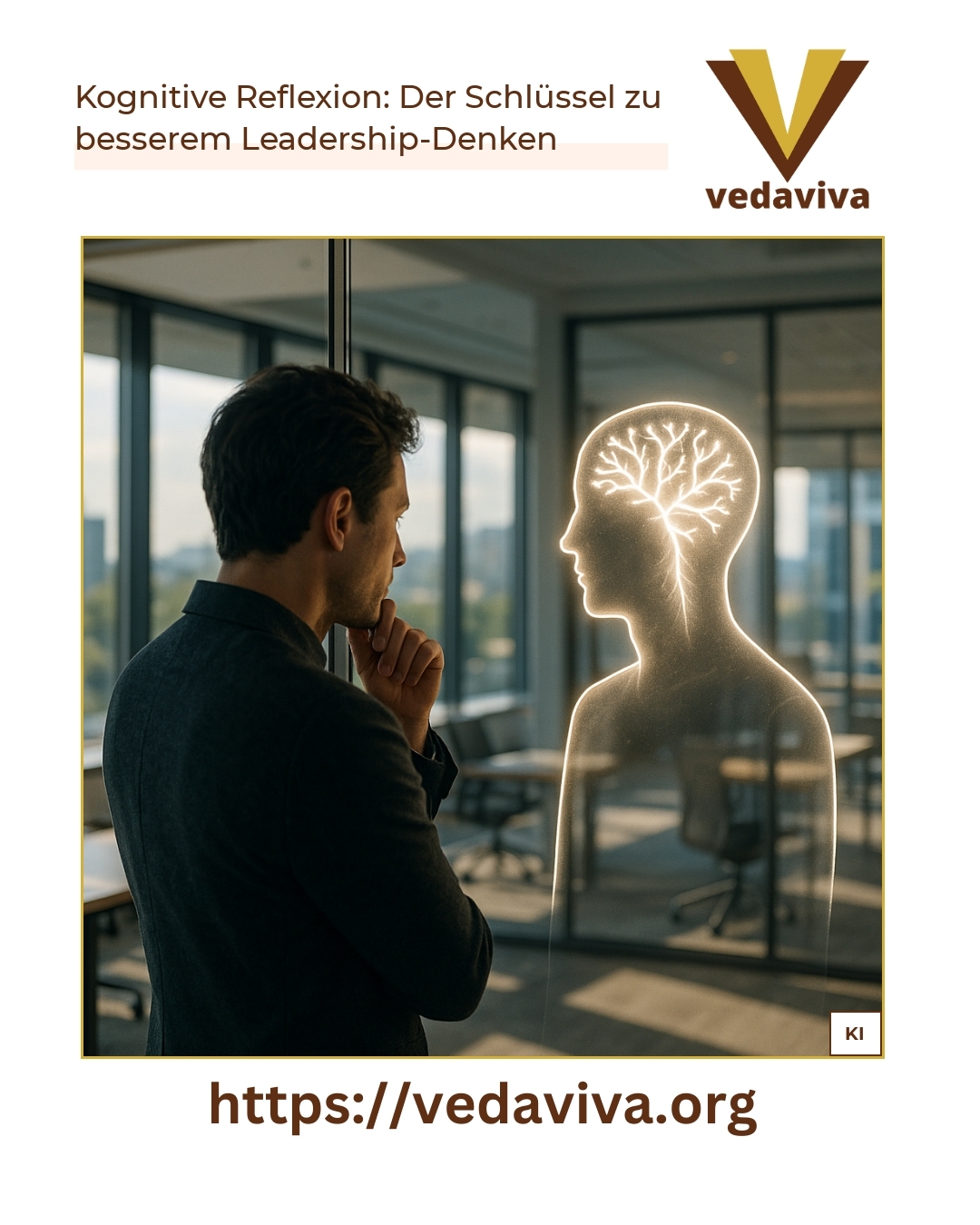Cognitive reflection as the basis for effective leadership
Cognitive reflection is regarded as a central key to better leadership thinking. It describes the conscious and systematic examination of one's own thought processes, decisions and actions. Managers who practise cognitive reflection increase their self-awareness, recognise thinking traps and improve their strategic decision-making. This enables them to master complex challenges more confidently and effectively.
Through targeted cognitive reflection, a manager creates the necessary mental space to step out of the often hectic day-to-day management routine and continuously scrutinise their own actions. This not only promotes personal development, but also has a positive effect on the entire team and the organisation.
The importance of cognitive reflection for managers
Reflection in a leadership role is far more than just thinking about the past. It activates important cognitive networks in the brain that promote creative thinking and problem solving. When managers actively take time for cognitive reflection, they learn to learn from successes and mistakes, recognise blind spots and thus lead more authentically and effectively.
For example, reflection leads to an increase in self-awareness, enabling managers to better assess their own strengths and weaknesses. It also improves the ability to use communication in a more targeted way, which leads to fewer misunderstandings and a more cooperative working atmosphere. Conflicts can also be resolved more constructively through reflective thinking, as managers adopt different perspectives.
Another effect of cognitive reflection is stress reduction: those who regularly pause to reflect on their emotions and stress factors often feel more serenity and mental resilience, which supports long-term performance in day-to-day management.
Practical examples of cognitive reflection in day-to-day management
BEST PRACTICE at company XYZ (name changed due to NDA contract) After completing a project, one manager systematically analysed which decisions were particularly effective and where there were communication problems. This reflection enabled her to better avoid conflict situations in the next project and strengthen team cohesion.
BEST PRACTICE at ABC (name changed due to NDA contract) One division manager used weekly journaling as a method of cognitive reflection. In doing so, he consciously questioned his assumptions and approaches to solutions. This practice led to him reacting more flexibly to market changes and contributing innovative ideas to strategy development.
BEST PRACTICE at DEF organisation (name changed due to NDA contract) In a coaching process, a manager was supported in reflecting on her reactions in stressful situations. Through cognitive reflection, she gained a better understanding of how she can break through unconscious thought patterns, which helped her to make calmer and well-thought-out decisions even under pressure.
Methods to promote cognitive reflection
Managers can use various techniques to successfully integrate cognitive reflection. One systematic method is concept mapping, in which thoughts are organised hierarchically and connections are made visible. This approach helps to recognise complex issues more clearly and derive structured approaches for action.
Another effective tool is the ORID approach (Objective, Reflective, Interpretive, Decisional). Reflection takes place in clearly sequenced steps, from objective observation and perception of feelings to interpretation and finally decision-making. This structure prevents impulsive judgements and promotes a comprehensive perspective.
In addition to such methods, it is advisable to schedule specific times for self-reflective quiet periods in the daily routine, for example through journaling or meditation. These rituals create the space to pause and consciously consider your own thinking, which increases cognitive flexibility.
Practical examples of the application of reflection techniques
BEST PRACTICE at medium-sized company GHI (name changed due to NDA contract) The manager implemented regular guided reflection sessions after completed projects. Questions from the ORID model were used specifically to shed light on team experiences and identify potential for improvement.
BEST PRACTICE at tech company JKL (name changed due to NDA contract) One team leader encouraged his team to create concept maps for complex problems. This not only promoted individual reflection, but also improved joint solution finding and understanding within the team.
BEST PRACTICE at consulting company MNO (name changed due to NDA contract) After several weeks of intensive coaching, the manager developed a daily routine consisting of 10 minutes of writing time for inner reflection. This helped her to recognise her own thought patterns more clearly and to adjust her leadership strategy more consistently.
Cognitive reflection as a continuous process of leadership development
Cognitive reflection is not a one-off technique, but a long-term development process. Managers can thus develop greater learning agility by consistently scrutinising the effects of their actions and adapting to changing requirements. This strengthens leadership quality in the long term and contributes to a positive leadership style.
It is important to understand this process as an accompanying tool for cognitive and emotional self-regulation. It helps to reduce inner uncertainties and create clearer orientation aids. Cognitive reflection also promotes the ability to recognise cognitive distortions at an early stage and take targeted countermeasures, which is particularly helpful in complex situations.
Examples of sustainable reflection processes
BEST PRACTICE at Group PQR (name changed due to NDA contract) The manager established an employee feedback system that regularly encourages self-reflection. Through dialogue with the team, she gained new insights and was able to align management decisions more precisely.
BEST PRACTICE at service company STU (name changed due to NDA contract) A young manager used monthly coaching sessions to continuously develop her reflective skills. This shaped her development into a more empathetic and effective leader.
BEST PRACTICE at non-profit organisation VWX (name changed due to NDA contract) Over several years, a culture of collegial reflection was established in the organisation, in which teams learn together and support each other in reflecting. This sustainably improved leadership skills and team dynamics.
My analysis
Cognitive reflection plays a crucial role in improving leadership thinking. By consciously analysing their own ways of thinking, decisions and behavioural patterns, managers develop greater self-confidence, flexibility and strategic clarity. Numerous practical examples show that systematic reflection increases leadership quality, facilitates conflict resolution and promotes resilience. This makes cognitive reflection an indispensable companion on the path to effective leadership.
Further links from the text above:
[1] The Power of Reflection in Executive Coaching - MindsOpen
[2] Does reflection actually help a manager? (And how!)
[3] Leadership Reflection: Transform Your Executive Impact
[4] The power of self-reflection - principles of good leadership
[6] Career practice: How managers can improve their self-reflection
Legal notice: Coaching does not replace therapy. It serves personal development. I do not diagnose or promise a cure. My offer is for personal development and is not a substitute for medical, psychotherapeutic or curative treatment. Please consult a medically qualified specialist if you have any health complaints. The experiences described here are based on individual feedback from my clients. They are not a guarantee of success and do not replace medical or therapeutic counselling. For more information and if you have any questions, please contact Contact us on the topic or read further blog posts on the Topic here.













